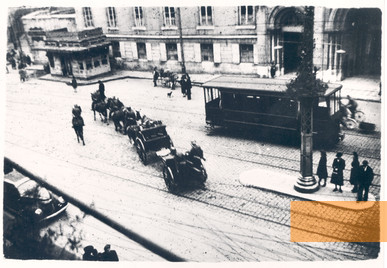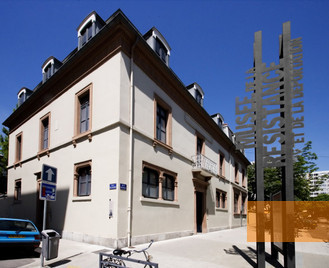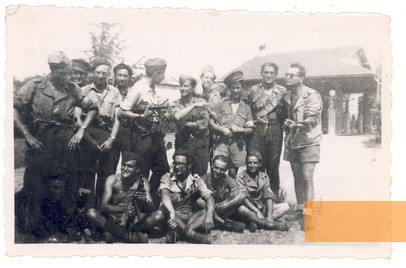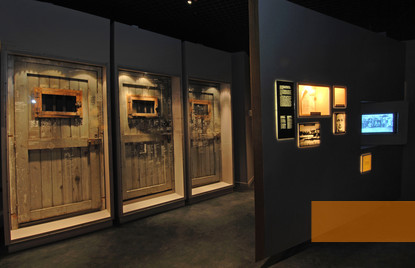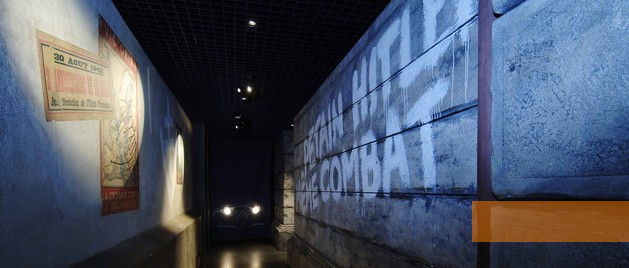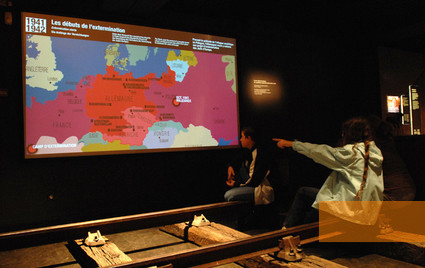The Museum of Resistance and Deportation, which presents the history of resistance in the Isère Region, was opened in 1963 and re-opened in 1994 in a new building. The exhibition focuses on the different groups in society from within which resistance to the Vichy regime sprung up; it also addresses the German repressive policies and the deportations to concentration camps. The exhibition also deals with the political purges which took place after the liberation in 1944.
Following an armistice between France and Germany in 1940, Grenoble became part of unoccupied southern France under the rule of the collaborative Vichy government. In November 1942, the Wehrmacht also occupied large parts of southern France, however, the area of Grenoble came under Italian occupation. From this time on, the Grenoble region became a place of refuge for Frenchmen who wanted to escape deportation to Germany. In September 1943, the Wehrmacht also took the Italian zone. Meanwhile, resistance grew stronger in the nearby Vercors mountain range, which due to its geography was a kind of natural fortress. Wehrmacht units and French militia fought against the insurgents; in July 1944, the »mountain plan« of the Résistance failed. German soldiers killed over 600 resistance fighters, they also murdered the patients of a military hospital and 201 civilians. Dr. Werner Knab, commander of the Security Police in Lyon, was responsible for the massacre. The museum in Grenoble commemorates this atrocity and other measures of repression undertaken by the German occupiers as well as the deportations of Jews from the Départements Isère to the National Socialist extermination camps.
The museum is dedicated to the victims of the German occupation in France, particularly in the Grenoble region. The exhibition is centred around the resistance movement and its killed members. A further core theme is the deportation of Jews from the region.
The Museum of Resistance and Deportation in the Isère Region in Grenoble was established on the initiative of resistance fighters' and deportees' associations in 1963 - at a time when such initiatives were still relatively rare. Due to a lack of space, the museum was extended in 1986 and restructured. It re-opened in a new building on July 1, 1994. In 2001, the general council of the Département Isère requested the establishment of a »Human Rights House«. Intense discussions with human rights organisations in Isère led to the conclusion that there are many overlaps between the values of the Résistance and contemporary human rights campaigns. The »Human Rights House« was seen as a logical extension of the Museum of Resistance and Deportation. This influenced both the permanent exhibition as well as temporary exhibitions as the museum. Recent temporary exhibitions have dealt with topics such as the Armenian genocide, the genocide in Cambodia, and the war in Chechnya. An exhibition entitled »Breaking the Silence« presented testimonies of unemployed people in the Département Isère from 1975 to 2007.
- Name
- Musée de la Résistance et de la Déportation de l'Isère
- Address
-
14, rue Hébert
38000 Grenoble - Phone
- +33 (0)476 423 853
- Web
- http://www.resistance-en-isere.fr
- musee-resistance@isere.fr
- Open
- Monday and Wednesday to Friday 9 a.m. to 6 p.m., Tuesday 1.30 p.m. to 6 p.m., Saturday and Sunday 10 a.m. to 6 p.m.
- Possibilities
- Documentation centre with digital collections, library, audio library and picture library. Two museum educators and a tour guide are available to accompany visitors.


